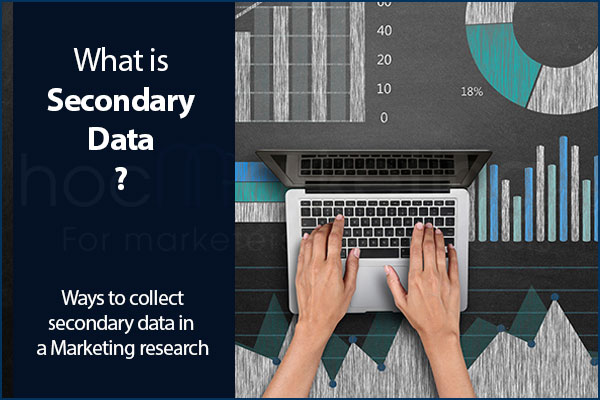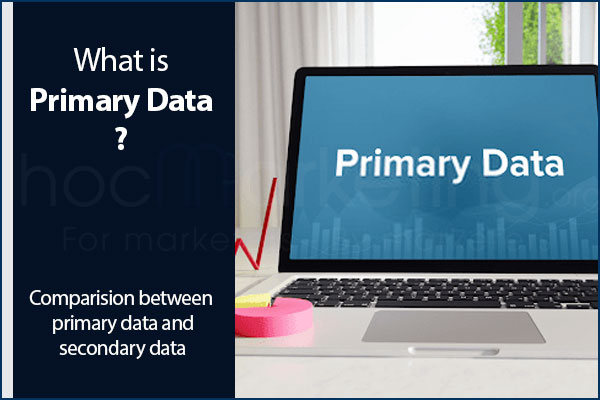
What is secondary data? Ways to collect secondary data in a Marketing research

The use of secondary data is being increasingly used in Marketing research. Using secondary data not only does this save time for researchers but it also reduces the cost associated with gathering original data. In this blog post, we will cover the basics of secondary data in marketing research.
The use of secondary data is being increasingly used in Marketing research. Secondary data can be obtained from a variety of sources, including social media sites, past studies, and surveys. Using secondary data not only does this save time for researchers but it also reduces the cost associated with gathering original data. In this blog post, we will cover the basics of secondary data in marketing research.
What is secondary data?
Secondary data is defined as "data collected for purposes other than the immediate needs of the research". It is the data when a researcher uses information from another source to inform their own work. For example, rather than survey a sample of consumers about their behavior, one could use secondary sources such as census or business statistics to determine this information.
Characteristics of secondary data
Secondary data has a number of attributes that make it distinct from primary data.
Secondary data is secondary to the research process.
It is not collected with the immediate goal of informing a study in mind. This means that there may be limitations on the data, as the original collection process was not designed for this purpose. Also, the data may be outdated and no longer relevant to current topics.
Data is usually not collected for purpose of the research
Research organizations collect primary data with the goal of developing a study that will inform people and provide relevance to current issues. There is a clear purpose behind collecting this data, as it will serve as the foundation for future work. This is notably different from secondary data, as it is collected for many other purposes.
It comes from a variety of sources
While primary data usually comes from organizations that are specific to one topic, secondary data can be gathered from many different sources. For example, data on consumer behavior could come from the census or social media websites.
It is usually unstructured and in a "raw" format
This means that secondary data is typically collected in a digital, text-based format. This also means that it is organized differently than research data. For example, social media sites have unique formats for users to organize their content which can vary significantly from one platform to the next.
Comparision between primary data and secondary data
Secondary Data
- collected for many different purposes
- information may not be relevant or up-to-date
- lower cost to collect
- take short time to collect
Primary data
- collected for a specific purpose
- contain new facts and statistics that have not yet been discovered
- more accurate depiction of what they really think about a product or service
- diverse in views and opinions
- higher cost to collect
- take long time to collect
Why do many marketers use secondary data in a marketing research?
Marketers use secondary data in a marketing reasearch because of following reason:
Using secondary data can be time-saving
The main advantage of using secondary data is that it saves time. It also allows researchers to receive quick feedback about current topics, as opposed to waiting for original research results.
Secondary data is usually less expensive
As secondary data is gathered from a variety of sources for many different purposes, the cost is typically lower than original research. This is because by the time secondary data can be used as a source for further study, it no longer serves its original purpose and there are no licensing or usage costs associated with its use.
Secondary data typically has diverse views and opinions
Because secondary data is collected for many different purposes, it reflects the variety of thoughts that exist on a topic. Original research results typically represent only one opinion which can be limiting when looking to gather objective viewpoints about the topic at hand.
Secondary data can be large in scale
As secondary data is collected for many different purposes, it typically includes a large number of subjects. This means that while primary research usually consists of between 100-300 participants, secondary data can include over 1 million people.
Possible limitations of using Secondary Data
There are possible limiations when the business use secondary data to conduct a research
Research has shown that secondary data can be less accurate than original research.
This is because secondary data can be altered or published before researchers have a chance to use it. There is also the possibility that some sources may not accurately reflect the beliefs of their users, as they were collected for other purposes and therefore do not tell the full story.
Secondary data does not reflect the opinions and views of the researcher
This is because secondary data has already been published and is being used by other organizations. This means that it can have different meanings to various groups of people.
It may not be relevant to the topic being studied
Many marketers using secondary data fail to take into account the purpose behind the original research, which ultimately lessens its value for their own study.
The time limit for using secondary data is short
If researchers receive secondary data that is not up-to-date and relevant, they simply will not use it in their own research. It is therefore important to avoid using outdated information in marketing research for this reason.
Ways to collect secondary data
There are many ways to collect secondary data for a research. Below are popular ways to collect it:
Using data available on the Internet
The internet is a valuable source of secondary data for marketers, as it contains vast amounts of information on any given topic. By drawing upon different websites and blogs, marketers can easily receive feedback about new products or services they wish to launch. They can also use site analytics to understand how people are using their sites in order to generate new ideas about how they can support customers.
Using data supplied by organizations
Many organizations (usually government organizations) are willing to share the secondary data they have collected. This saves marketers time and money because it doesn't require them to gather their own information for their study, which can be costly in terms of time and resources.
Some agencies provide data as a service. They are organizations which specialize in collecting data and provide it to those who have demand with a certain cost.
Using company records
As companies keep track of customer data, there is a wealth of information that can be used for secondary purposes. This data is particularly useful when marketers are looking to monitor customer behavior over time, as it can be used to track changes in their purchasing habits.
Using data from previous research studies
It is important that all researchers carefully consider the limitations of any secondary data they plan to use for their own research project, as these limitations may be significant. This is particularly the case for data that has been collected for different purposes, as it may not represent the opinions of individuals actually looking to purchase a product or service.
Public libraries
Public libraries are a great resource for researchers looking to find secondary data, as they often have access to academic journals that contain relevant information. This type of material is useful for more specialized studies which require in-depth analysis or detailed case studies on certain topics.
Conclusion
When it comes to marketing research, secondary data is an invaluable resource for marketers. It can be used in many ways that are appropriate depending on the study being conducted. Secondary data may not always reflect the opinions of those who would purchase a product or service, but this should never stop you from using it as part of your own marketing strategy.








